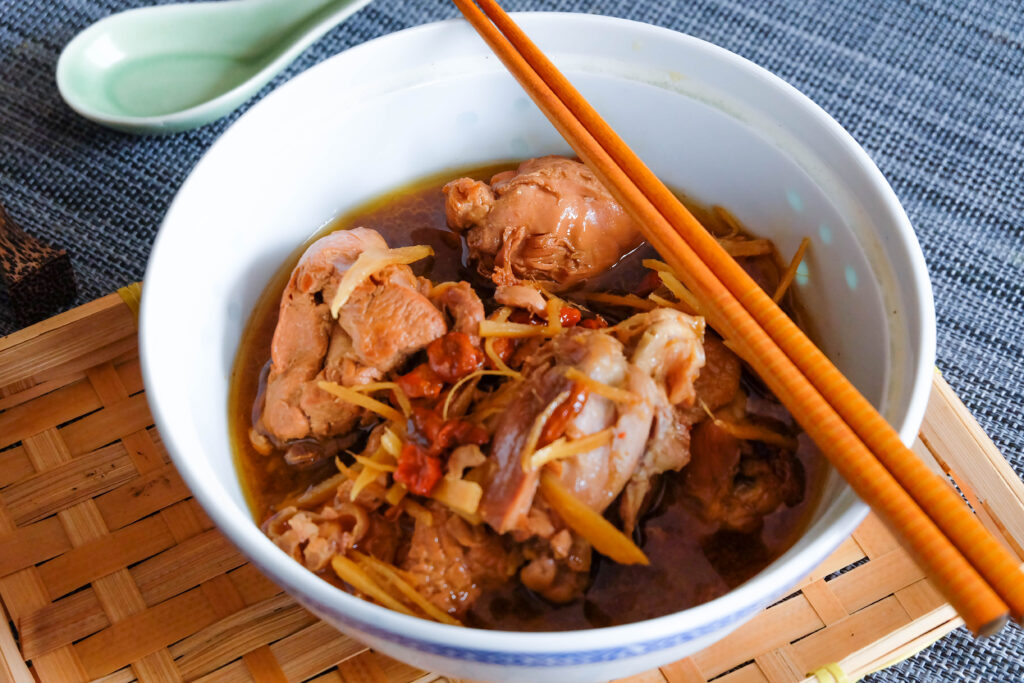Mayouji 麻油鸡 is the most classic Chinese dish that many women enjoy during the postpartum period after their delivery. Using just a few ingredients, ayouji 麻油鸡 provides many of the nutrients that women need in order to recover from the strains of pregnancy and the physical traumas caused by childbirth. The aroma of this dish is so enticing, that men often beg for a small portion! This is also a dish that mothers and mothers-in-law make to show their love for their daughters and daughters-in-law to aid their postnatal recovery.
Before we dive into the recipe, which I recently made for a friend who had just given birth, let’s look at the Chinese concept of postnatal care.
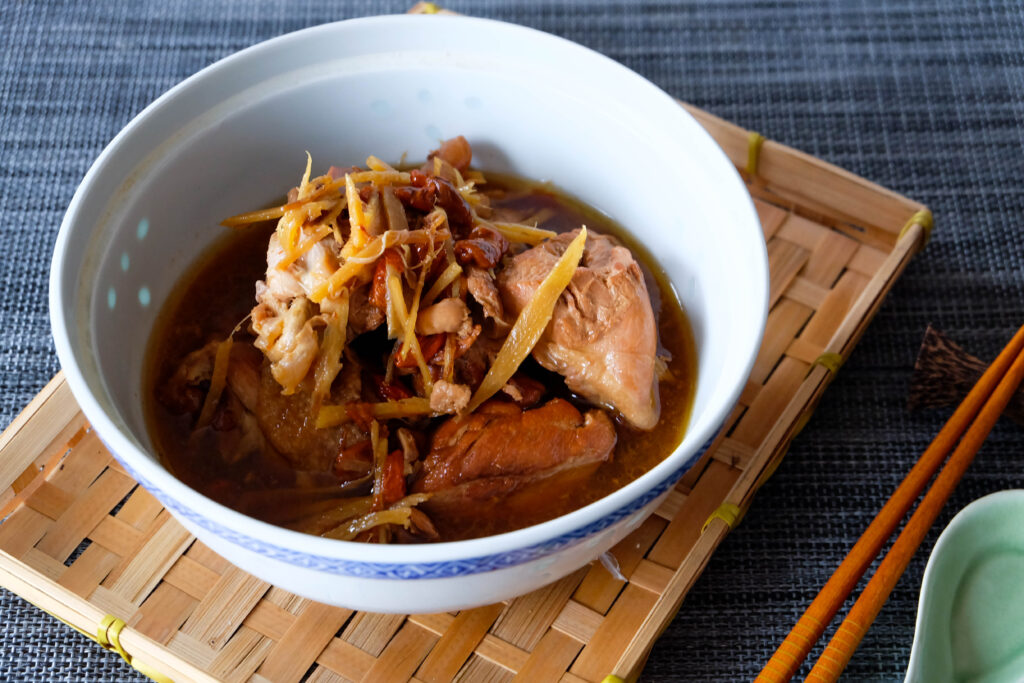

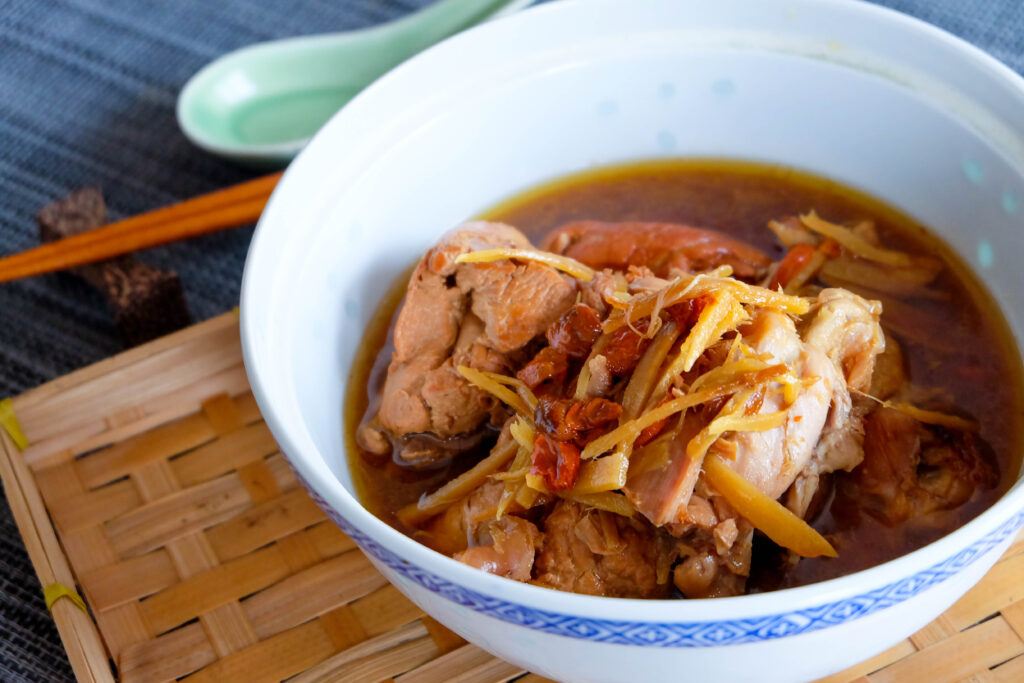
Zuoyuezi 坐月子: The Chinese Concept of Postpartum Care
The period right after delivery up to about six weeks is a crucial period to nurse a women back to health, according to Chinese folk culture. Any mistakes made during this period would result in ailments and pains in their old age, so many women take the matter very seriously, including their mothers.
Known in Mandarin Chinese as ‘Zuoyuezi’ 坐月子, which roughly translates into ‘sitting out the month‘, the traditional Chinese postnatal care contains a number of bizarre rules, so much that not many younger women nowadays are willing to endure more than a few days of the rules. I have listed some of them here:
- Do not take a shower or a bath
- Do not wash your hair
- Do not eat raw fruits and vegetables
- Do not drink alcohol
- Do not be exposed to fans or air-conditioners, or cold wind in general
- Do not climb stairs or ladders
- Do not touch cold water
- Do not read
- Do not cry
- Do not knit or sew
The consequences of the violation of any of these rules include severe rheumatism at old age, bad luck, dementia, the inability to get your figure back, the inability for your womb to retract, and a perpetually scarred and loose vagina to top the list. All of these sound really scary and vicious.
Whilst most of this is rubbish, we can imagine the economic and environmental context of rural China in the past two millennia when the concept of Zuoyuezi took shape. This was a time when hairdryers and heaters did not exist, so catching a cold might often lead to more serious ailments. Food poisoning by Salmonella was deadly back then and still is, so the consumption of raw vegetables was probably not a good idea. The rule of staying in bed helps to relieve women of any sort of labour, which they most likely had to partake.
The good thing about the Chinese postpartum care, is that there are a number of dishes that women have to eat during Zuoyuezi, and Mayouji 麻油鸡 is an all-time favourite.
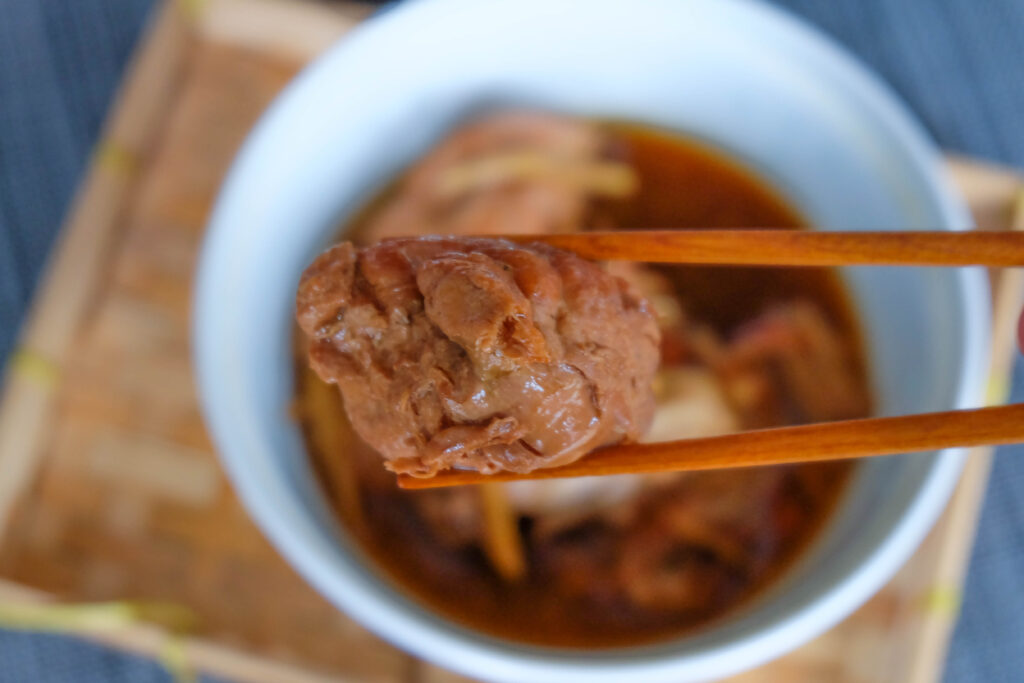
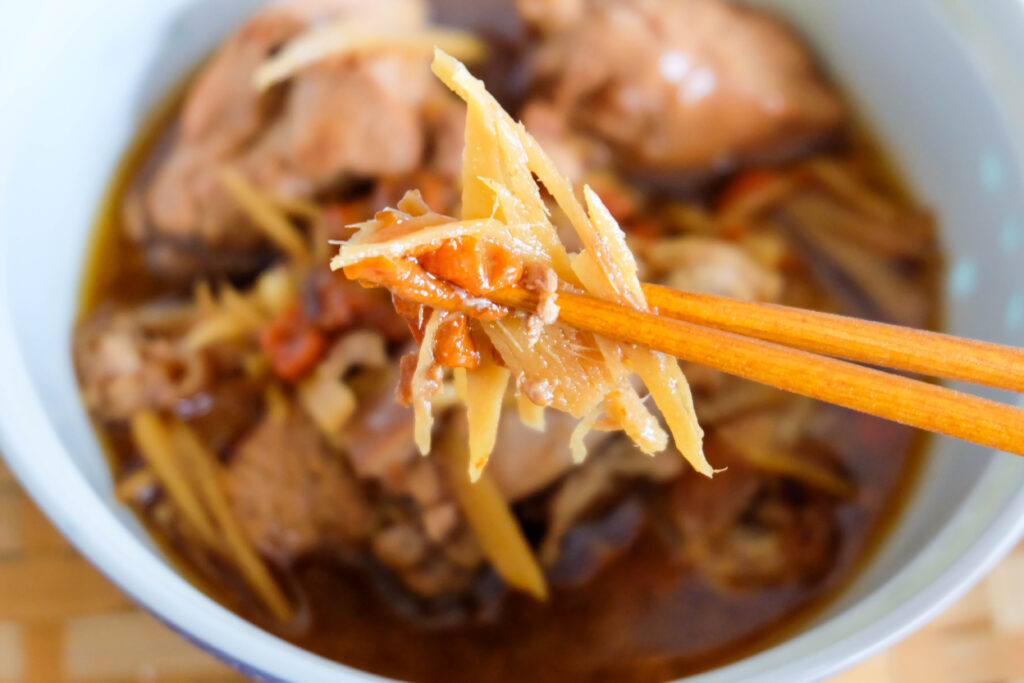
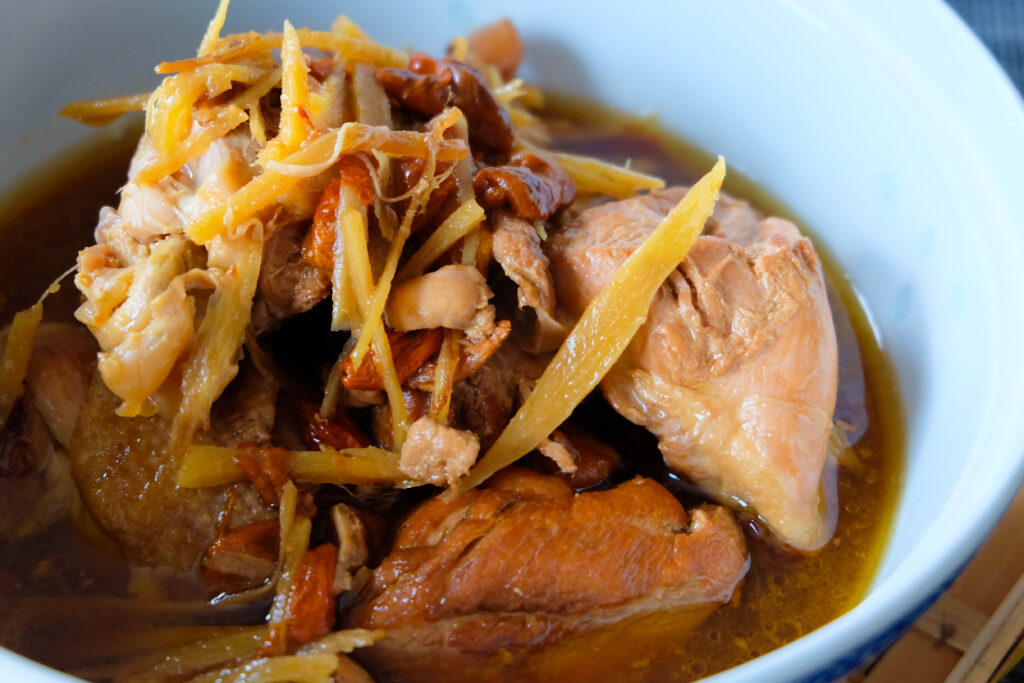
It has been shown in Taiwan that Chinese women there consume on average far more protein than women in the US after childbirth. This also includes a higher intake of calcium and other trace minerals. The reason? Mayouzi 麻油鸡 and the whole array of meat and grains that the traditional Zuoyezi prescribes (see list below). Mayouzi 麻油鸡 in particular, provides a regular intake of protein for milk production, and the calcium from the chicken bones helps to replenish those lost during pregnancy. As East Asians are often lactose intolerant, this practise replaces milk intake in other cultures.
Apart from Mayouzi 麻油鸡, other Zueyuezi dishes include:
- Shenghuatang 生化汤: A herbal soup made with Dangguo 当归 [Angelica Sinensis]
- Hongdouyimizhou 红豆薏仁粥: red beans and barley porridge
- Hongzaoshui 红枣水: Jujube infusion
- Xiaomizhou 小米粥: Millet porridge
- Stir-fried pig liver
- Stir-fried lean pork
- Lean pork in rice congee
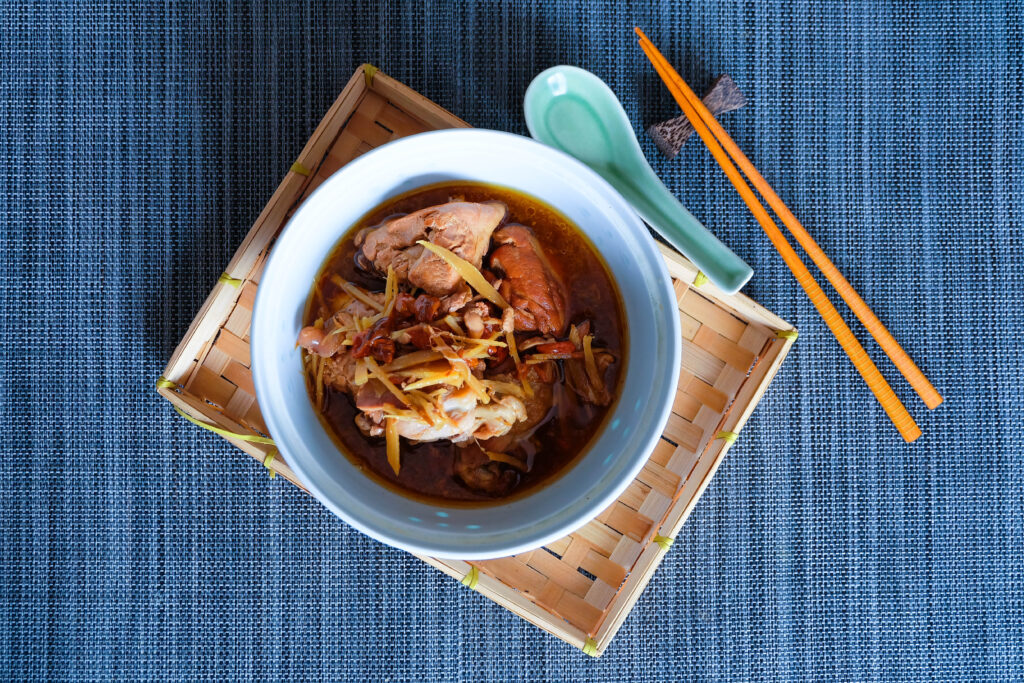
A few tips about Mayouzi 麻油鸡
While the dish is very easy to make, please take care of a number of points below:
Do not burn sesame oil: Sesame oil is a garnish, much as extra virgin olive oil, because they have a very low burning point. By burning sesame oil, you ruin the wonderful aroma plus they taste bitter. Hence sesame oil in this recipe is not used to stir fry the ginger.
Use pure sesame oil: I have noticed that there are ‘sesame-flavoured’ oil around! Beware of these. Use only pure sesame oil.
Boil the alcohol away: You might think it is strange to use alcohol in this recipe when the rules of Zuoyuezi dictates no alcohol consumption. The folk logic is that the alcohol is added to kill the bacteria and by boiling the alcohol away, you also kill any remaining bacteria in a double whammy.
Use old ginger: Old ginger has more health benefits – and more fire – for postnatal women. But they are more sinewy and harder to cut and to chew. This is why we first need to sautee them. If you cannot find old ginger, you can use young ginger and let your young ginger first sit around for two weeks.
Use a whole chicken, not chicken fillet: This recipe requires the bones of the chicken for the calcium and other minerals contained in there.
Serving: 2 persons
Ingredients:
- 1 medium-sized chicken of around 1kg
- 2 pieces of 15cm old ginger, peeled and julienned
- 100ml pure sesame oil
- 500ml Shaoxing rice wine
- 2 tbs vegetable oil
- A handful of Goji berries (optional)
- Salt and pepper to taste
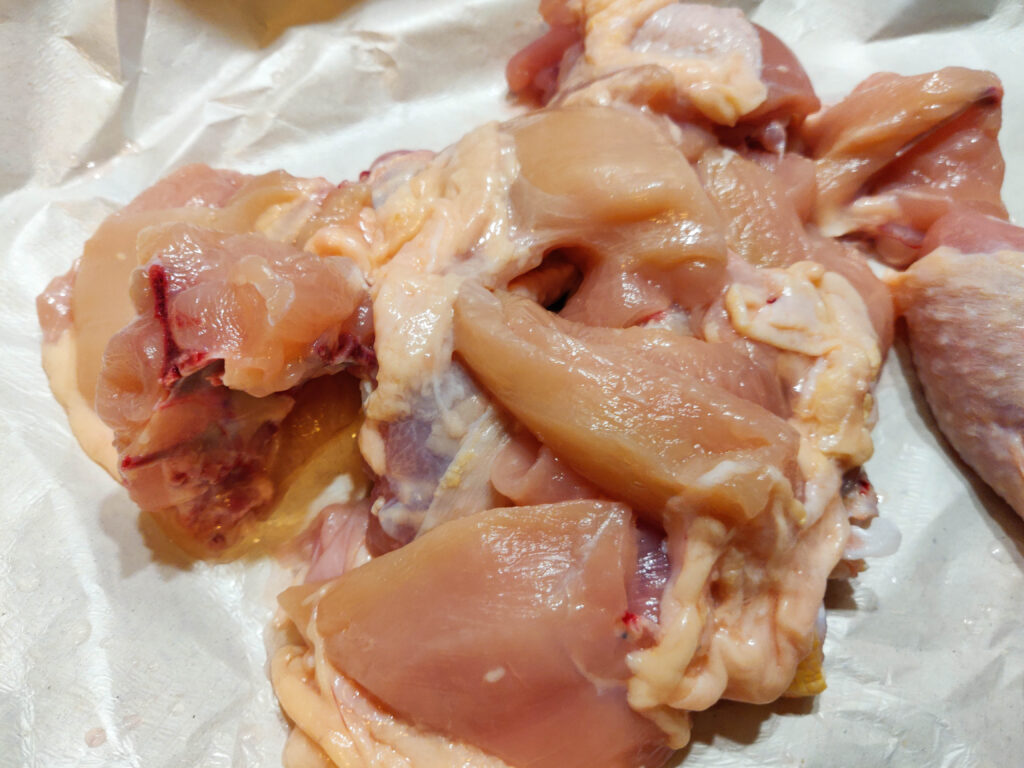
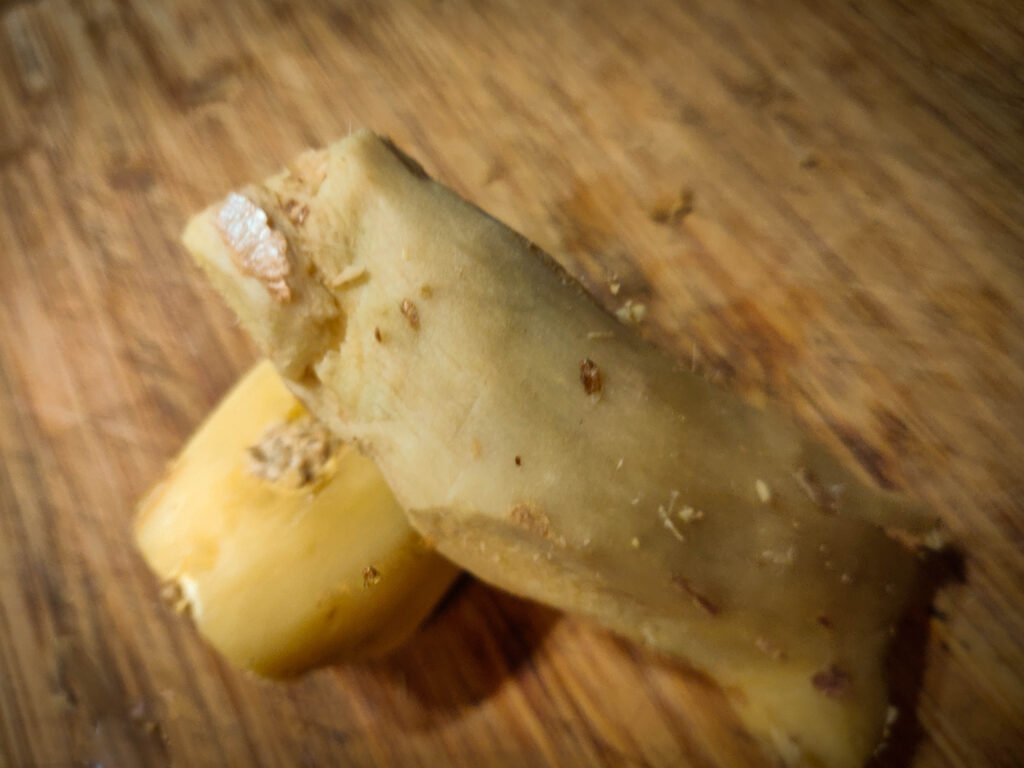
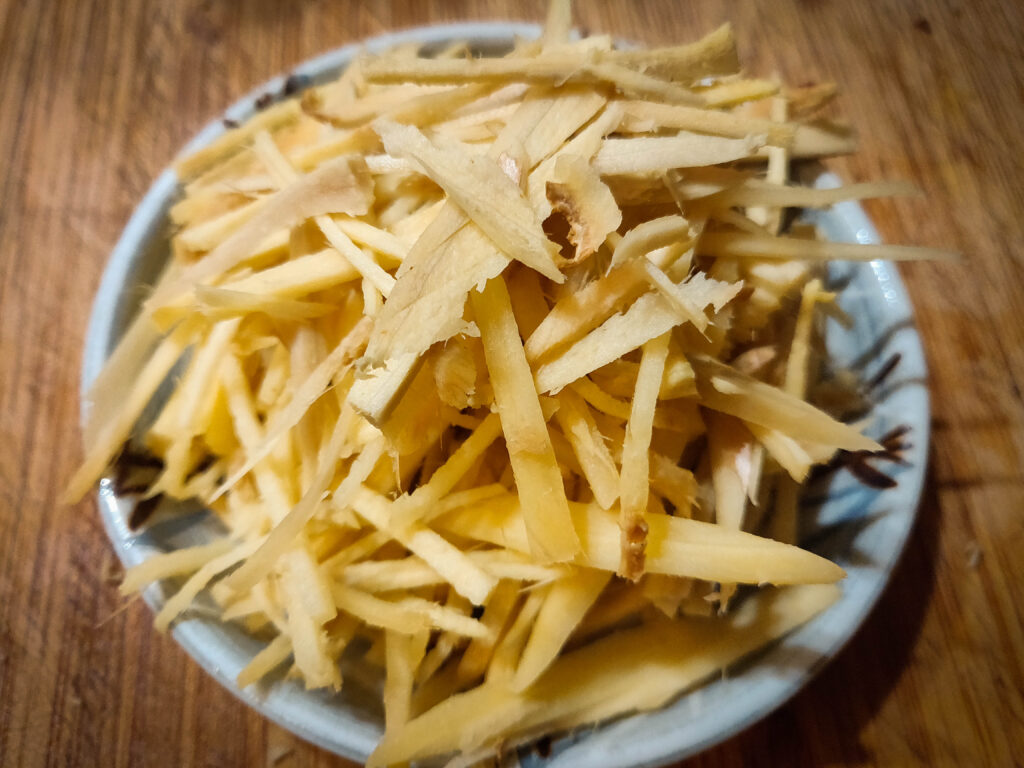
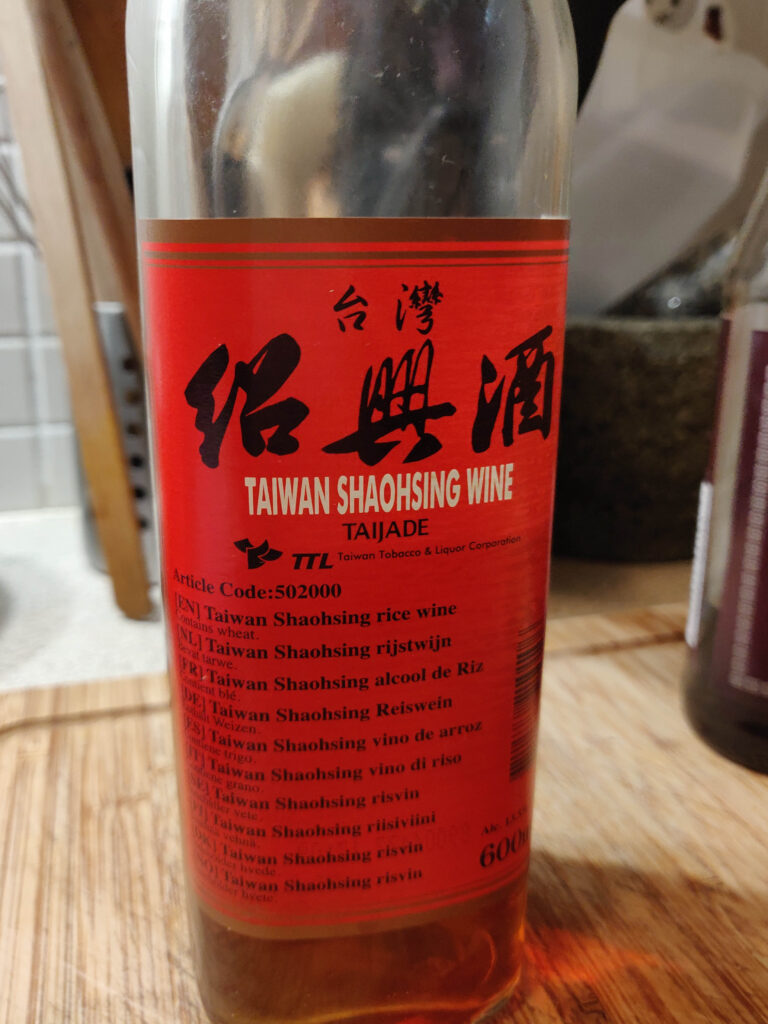
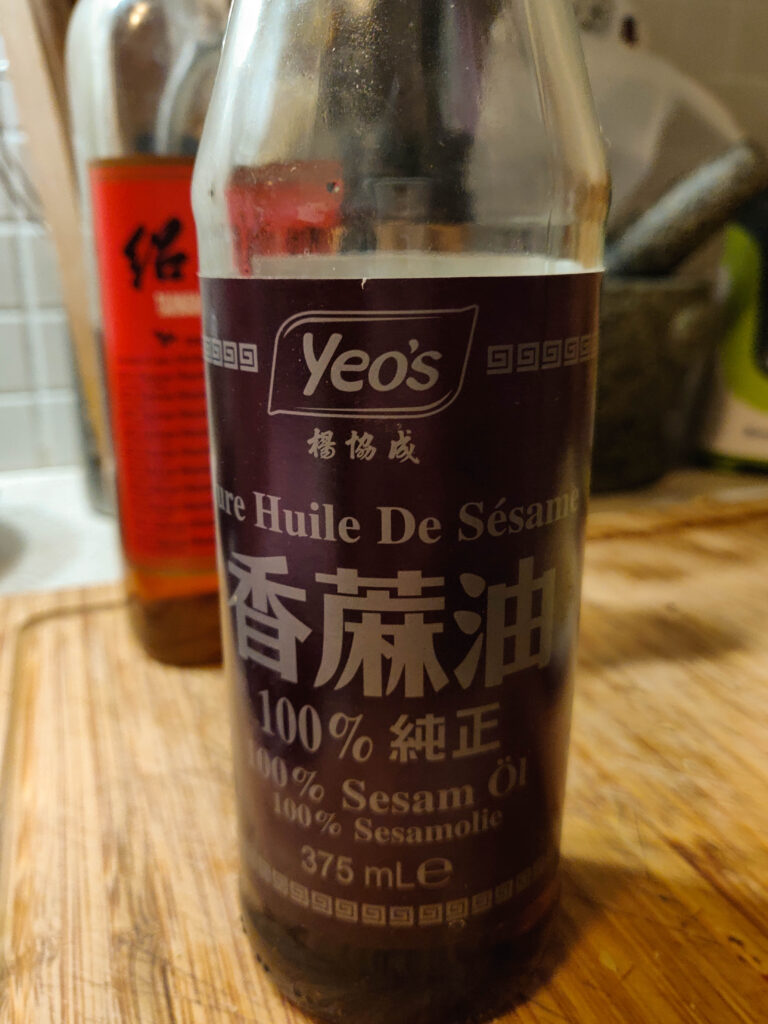
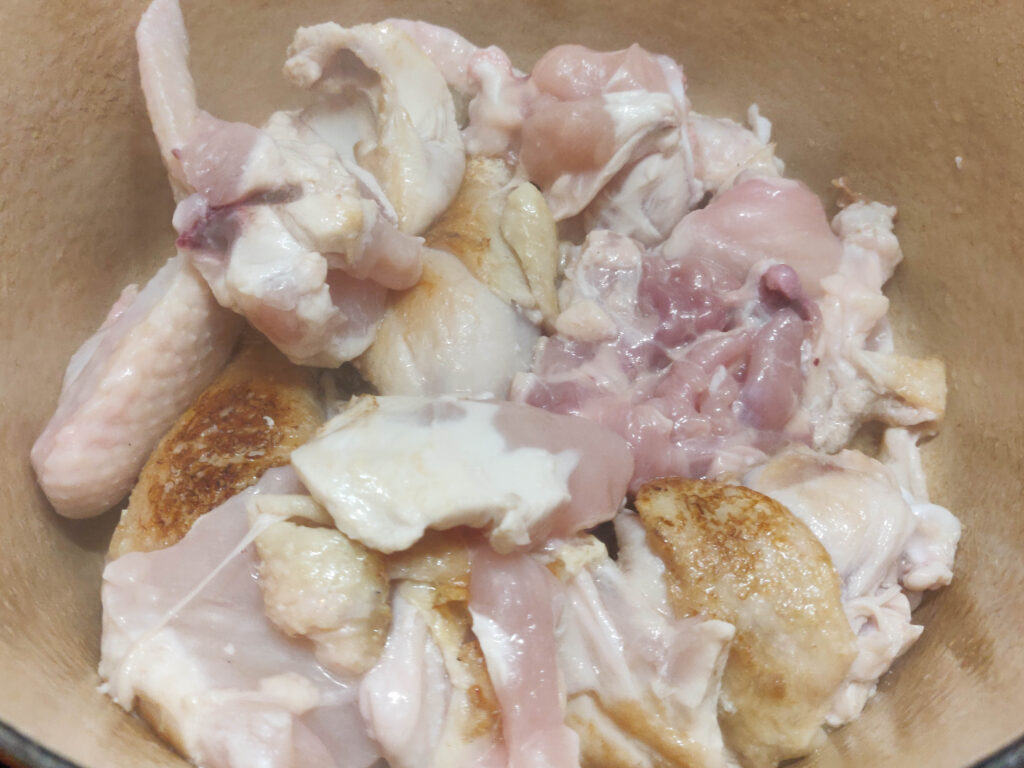
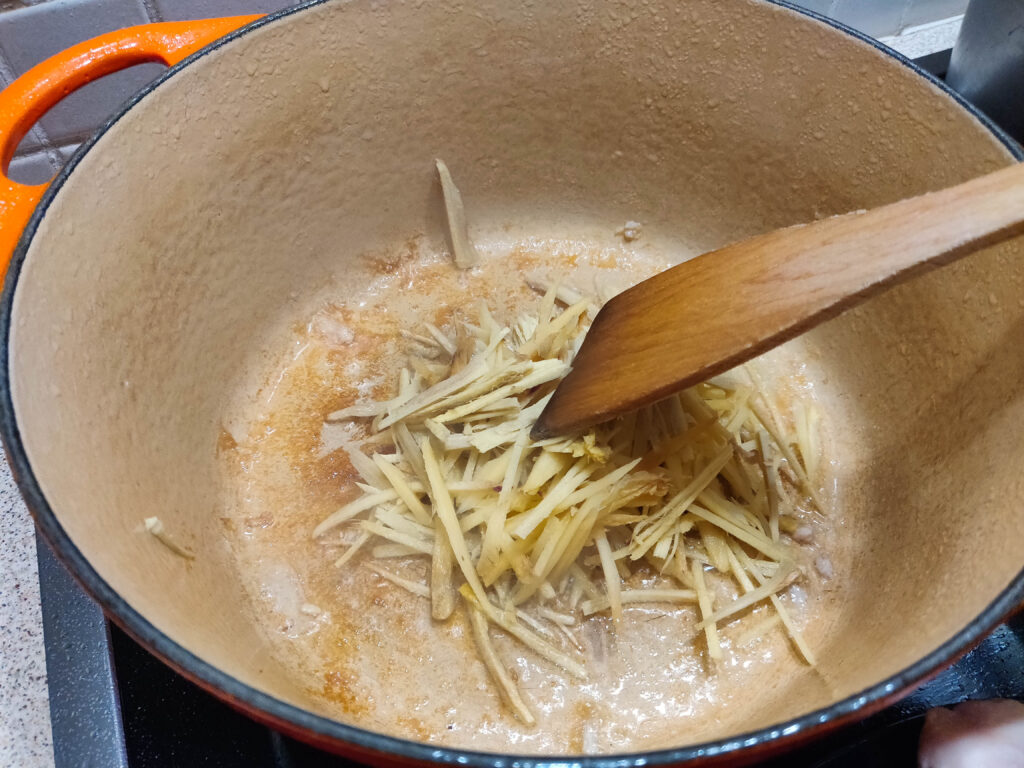
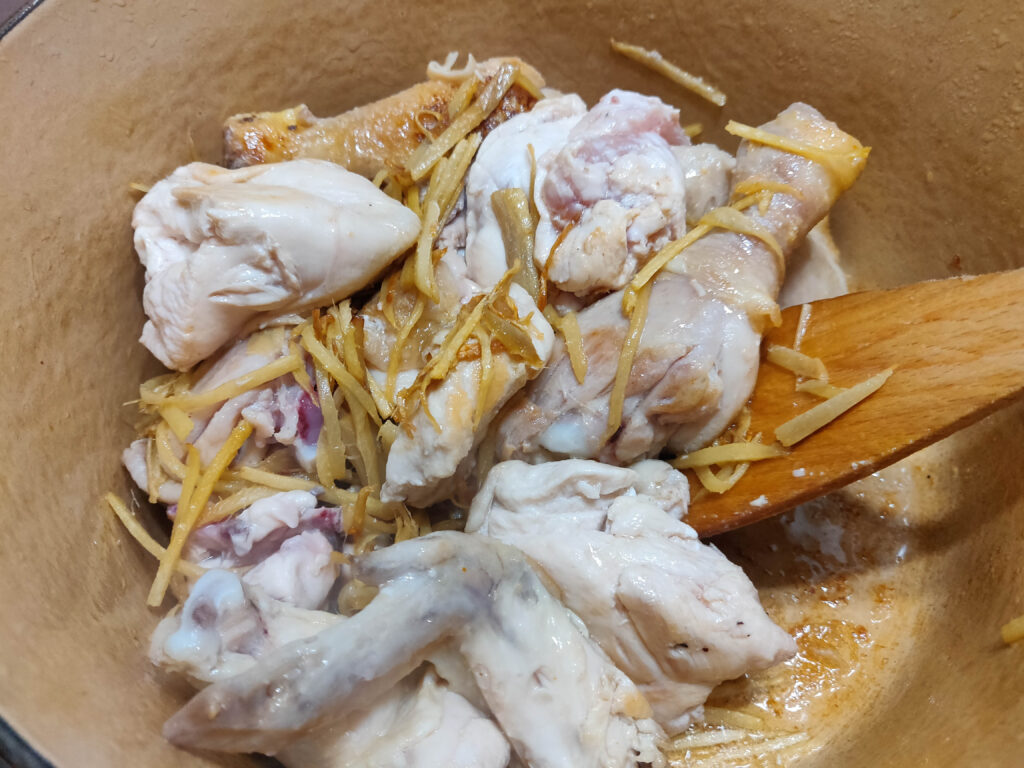
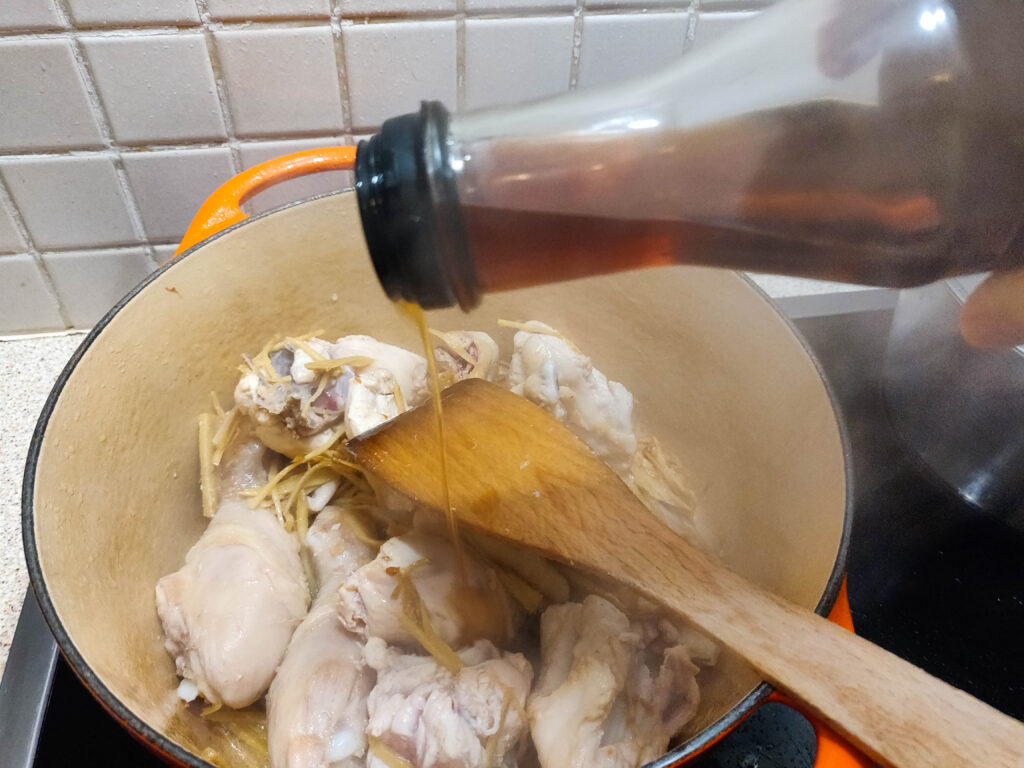
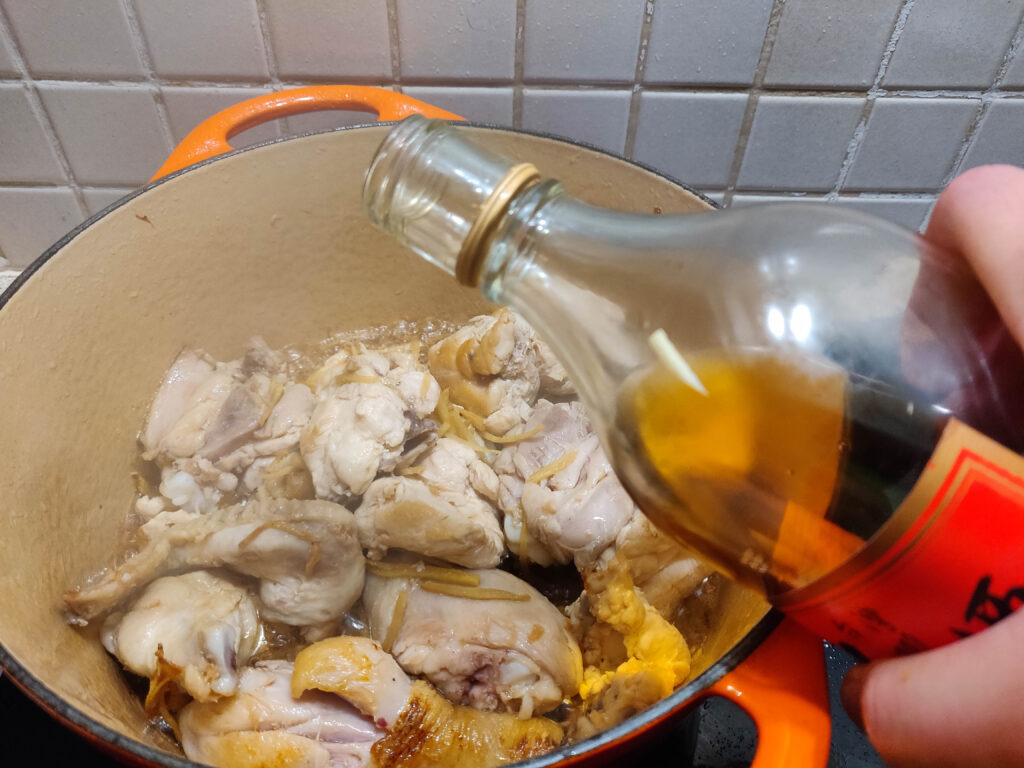
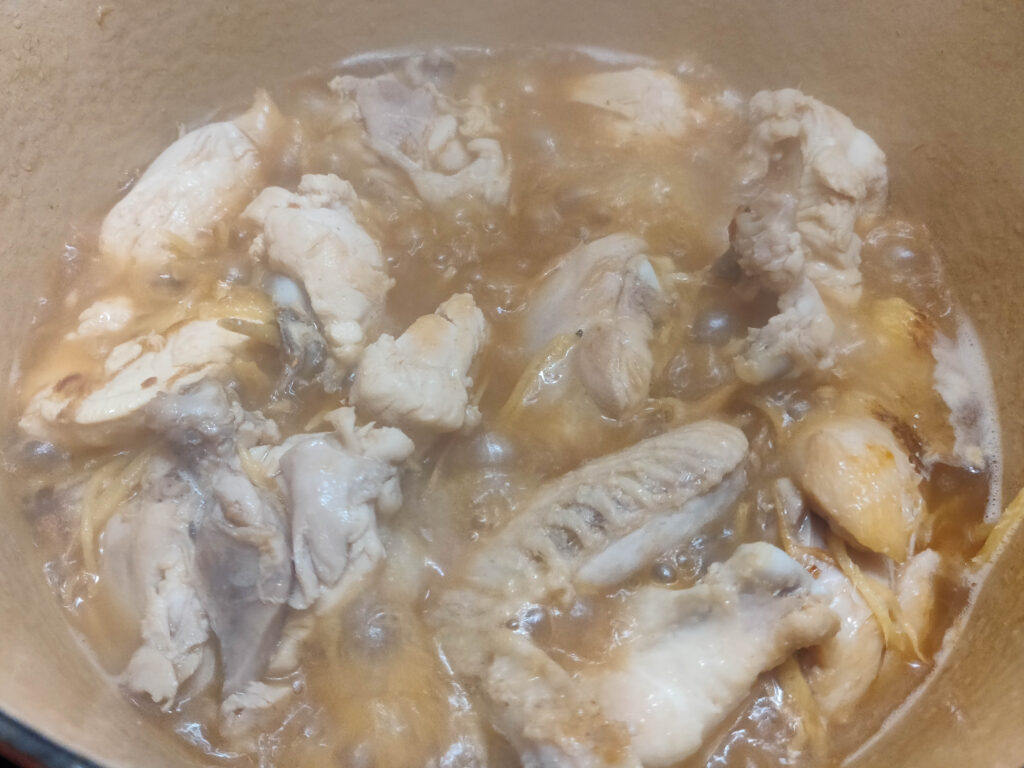

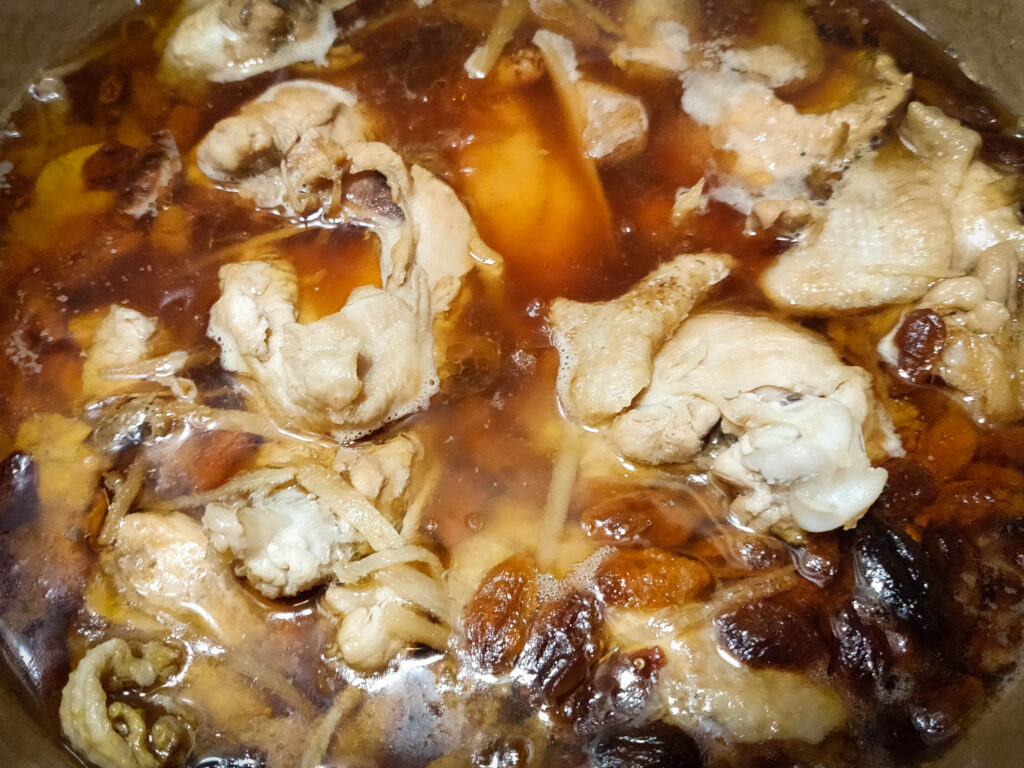
Instructions:
- Cut your whole chicken into pieces (discard the backbone if desired), wash thoroughly under the tap to clean any traces of blood. Dry the chicken with kitchen paper towels.
- Heat up your pot with vegetable oil on medium heat and sautee the chicken. Make sure both sides are brown so the fats from the skin flows into the pot. Remove the chicken and set them aside.
- Stir-fry your julienned old ginger in the oil until the aroma is released and they are limp but not brown or charred.
- Return your chicken to the pot and mix well. Add sesame oil to the chicken and stir well.
- Add Shaoxing rice wine to the pot, cover and bring to boil. Uncover and leave to simmer on medium-low heat for 10 minutes.
- Add around 500ml of water or until the chicken is covered. Add goji berries. Bring to boil and then cover, then let it simmer on low heat 1 hour. When the chicken is soft and falls off the bone, it is ready to be served.
- Before serving, add salt and pepper to taste.
- Switch off the heat, serve it piping hot.
